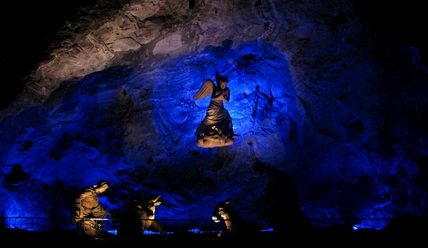
About 70 million years ago, with the formation of the Eastern Cordillera In Colombia (branch of the great Andes mountain range), one of the largest salt deposits in the world was also formed, located in territories of what is currently the municipality of Zipaquira, just 47 kilometers from the city of Bogota,.
The first to discover and take advantage of such wealth were the indigenous Chibchas and Muiscas more than 600 years ago, but it was thanks to the German scientist Alexander Von Humbolt that the beginning of an appropriate salt exploitation was marked at the beginning of the XNUMXth century.
It was at that time when the miners, who were very devoted to the Virgin Mary, began to carve out the future of what today is considered one of the wonders of Colombia, the majestic salt Cathedral.
Initially these workers built a small chapel inside these mines; but it was in the middle of the XNUMXth century that the construction of a great Cathedral was supported, which remained for almost half a century.
At the beginning of the 90s, and with the collaboration of the Colombian Society of Architects, the current Salt Cathedral of Zipaquira was designed, a work that is considered one of the most notable artistic and architectural works in the world.
The Cathedral is the main attraction of the complex Salt park, in which visitors can learn about geology and natural resources, admire the only religious work in the world made with this element of nature.